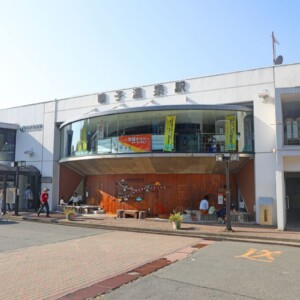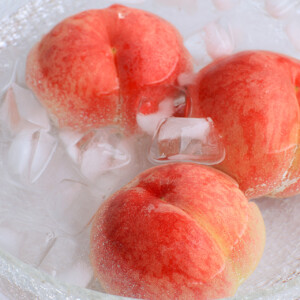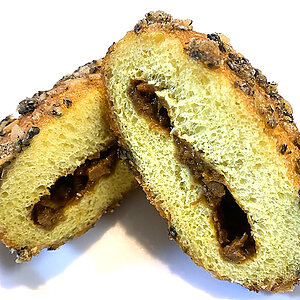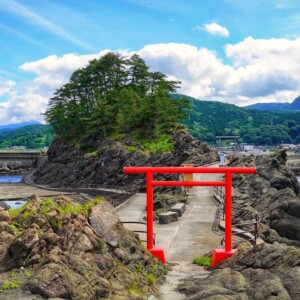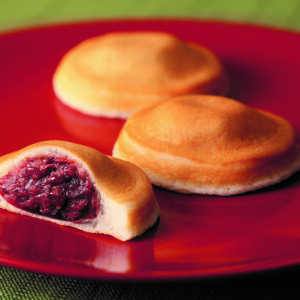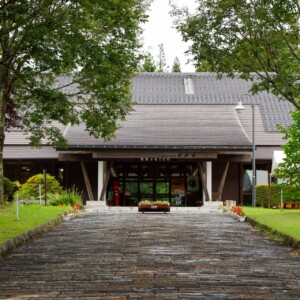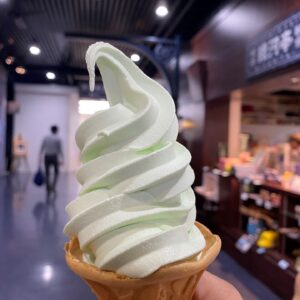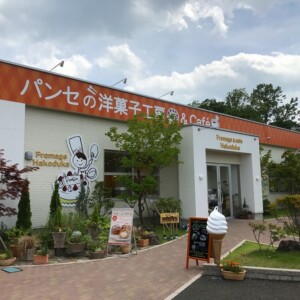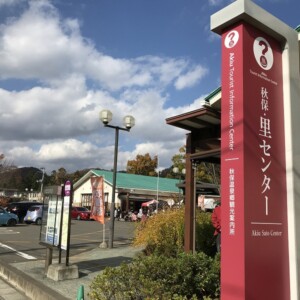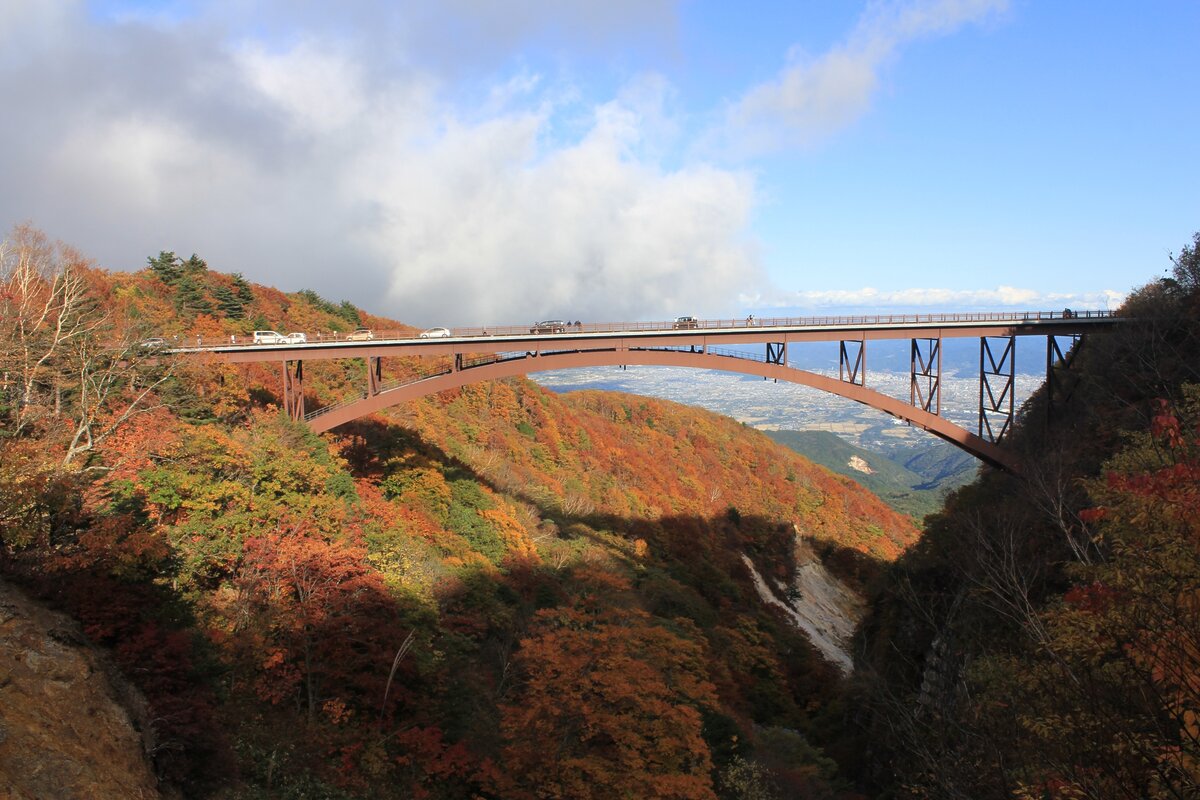
[Tohoku Autumn Foliage Driving Map: Fukushima Edition] 3 Recommended Driving Courses and Local Cuisine!
table of contents
- 1 Lake Numazawa, Lake Tadami, and Lake Tagokura (Kanayama Town and Tadami Town, Onuma District: National Route 252)
- 2 Nanko Park and Shirakawa Komine Castle (Shirakawa City: National Routes 294 and 289)
- 3 Natsuigawa Valley (Iwaki City: Prefectural Route 41 Ono-Yotsukura Line)
- 4 summary
- 5 Tohoku Autumn Leaves Driving Map Series
In Fukushima Prefecture, the southernmost of the six Tohoku prefectures, autumn leaves are at their peak in the mountainous region of Aizu and the highlands of Urabandai
Among them, in the warmer Hamadori and Nakadori areas, many areas are just starting to change color, and you can enjoy a drive to see the autumn leaves from mid- to late November
Lake Numazawa, Lake Tadami, and Lake Tagokura (Kanayama Town and Tadami Town, Onuma District: National Route 252)
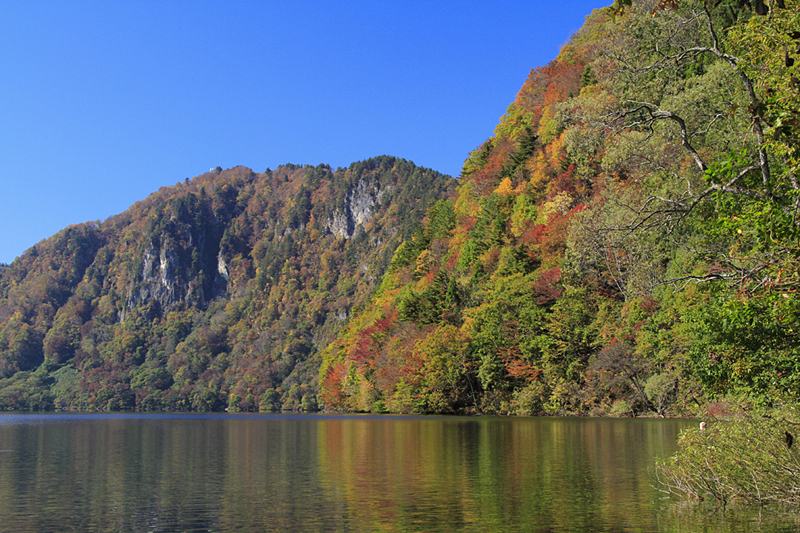
Kaneyama in the Oku-Aizu region Tadami on the border with is a pleasant course for viewing autumn leaves, running along the gorge created by the Tadami River.
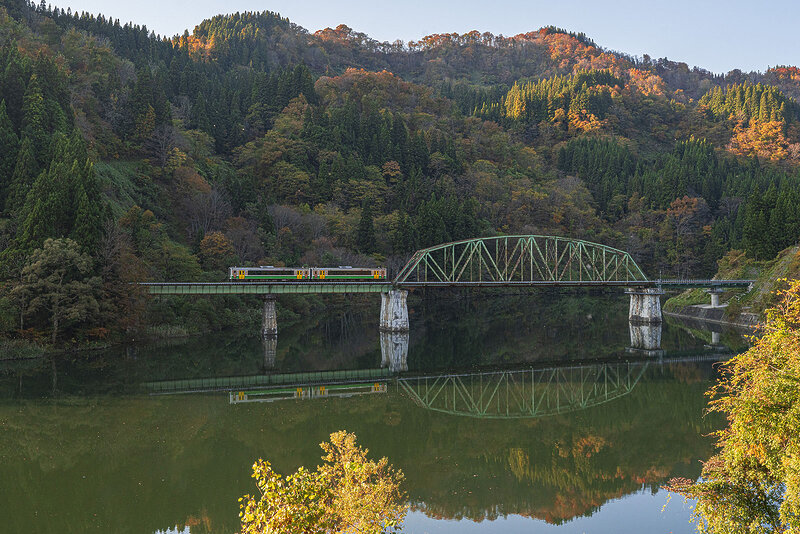
The Tadami River has an abundant amount of water, and within its 50-kilometer stretch there are five hydroelectric dams: Ueda, Honna, Taki, Tadami, and Tagokura. Each dam lake offers a beautiful view colored by autumn leaves
Lake Numazawa born from a caldera

This caldera lake was created by the eruption of Numazawa Volcano and is 96 meters deep at its deepest point. During the autumn foliage season, the area around it is painted in vibrant reds and yellows for about 7 kilometers
In addition to parks and campgrounds on the lakeside, there are also facilities such as the Kanayama Town Fairy Art Museum, where you can enjoy a relaxing time surrounded by nature while viewing the autumn leaves
To get to the shores of Lake Numazawa from National Route 252, take Prefectural Route 237 or the town road "Fairy Road" from near Aizu-Nakagawa Station on the JR Tadami Line
Lake Numazawa<Information>
- Name: Lake Numazawa
- Location: Kanayama Town, Onuma District, Fukushima Prefecture
GOOGLE MAP
Oshio Natural Carbonated Water Spring and Takizawa Natural Carbonated Water Spring

Kanayama Town , there are two spots where natural carbonated water springs up, which is rare in Japan.You can drink soft, slightly carbonated water with a mellow taste.
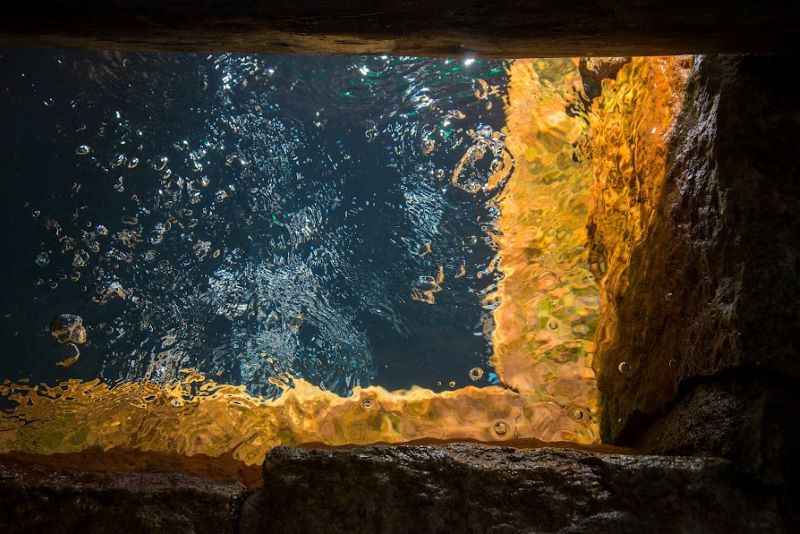
Of these, Oshio Natural Carbonated Water is bottled and sold at nearby stores, and is also used as a gift in return for donations to Kanayama Town's hometown tax donation program.
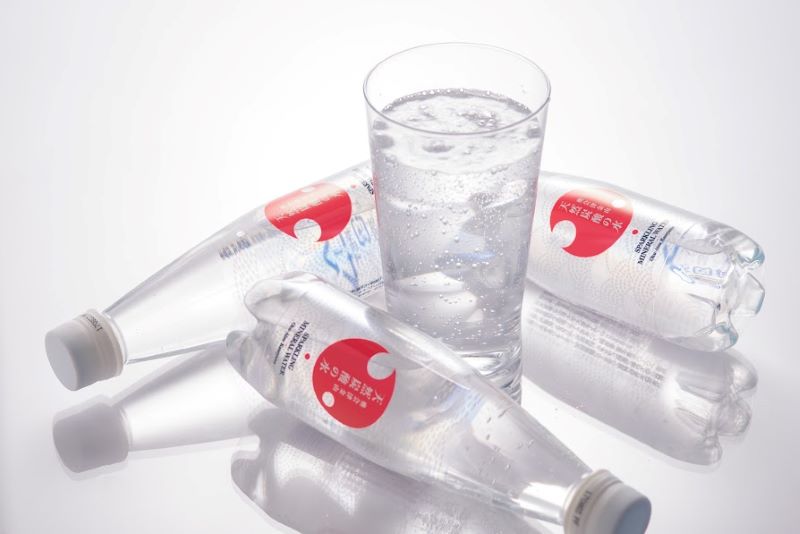
The other " Takizawa Natural Carbonated Water " can also be used for drinking, but it is not well maintained, so if you are concerned about this, we recommend Oshio Carbonated Water.
Oshio Natural Carbonated Water <Information>
- Facility name: Oshio Natural Carbonated Water
- Address: 5298 Takizawa Kaminoyama, Kanayama-cho, Onuma-gun, Fukushima Prefecture
- Phone number: 0241-42-7211 (Kanayama Town Tourism and Products Association)
- URL: Fukushima Tourism Information Site "Fukushima Travel"
GOOGLE MAP
Takizawa Natural Carbonated Water <Information>
- Facility name: Takizawa Natural Carbonated Water
- Location: Takizawa, Kanayama-cho, Onuma-gun, Fukushima Prefecture
GOOGLE MAP
Lake Tagokura and Lake Tadami are like siblings
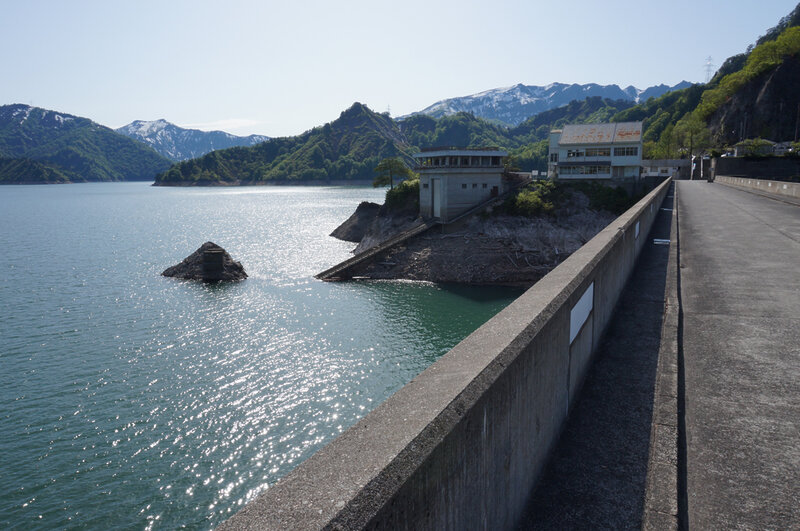
The 145-meter-high Tagokura Dam in Tadami Town is one of the largest hydroelectric dams in Japan, along with the Okutadami Dam further upstream
The dam lake, Lake Tagokura , is within Echigo Sanzan Tadami Quasi-National Park and is known as a famous spot for viewing autumn leaves. In 2005, it was selected as one of the "Top 100 Dam Lakes."
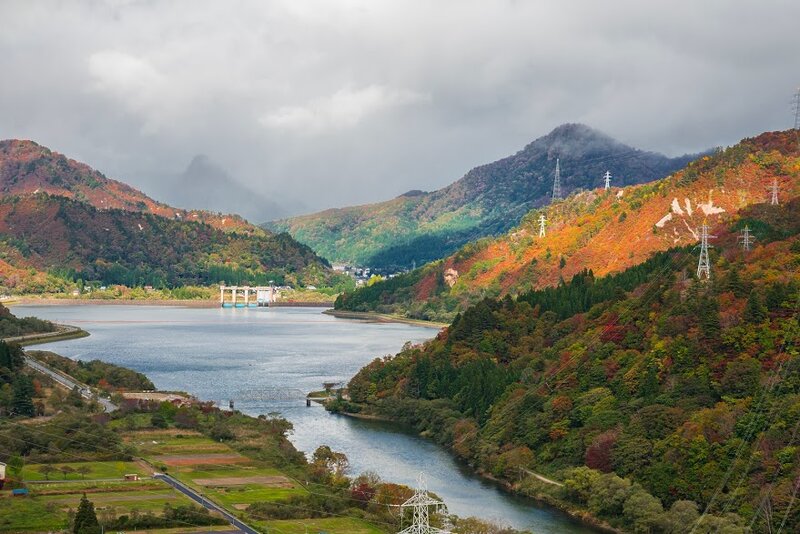
was constructed as a reverse regulating reservoir to adjust the amount of water released from Tagokura Dam
Because they are so close together, you can see each other from the top of both dams
Tagokura Dam <Information>
- Facility name: Tagokura Dam
- Location: Sugame, Tagokura, Tadami-machi, Minamiaizu-gun, Fukushima Prefecture
- URL: Japan Dam Association Official Website
GOOGLE MAP
Tadami Dam <Information>
- Facility name: Tadami Dam
- Location: Ishibuse, Tadami-machi, Minamiaizu-gun, Fukushima Prefecture
- URL: Japan Dam Association Official Website
GOOGLE MAP
Tadami Town's B-class gourmet "Soba Yakimochi"
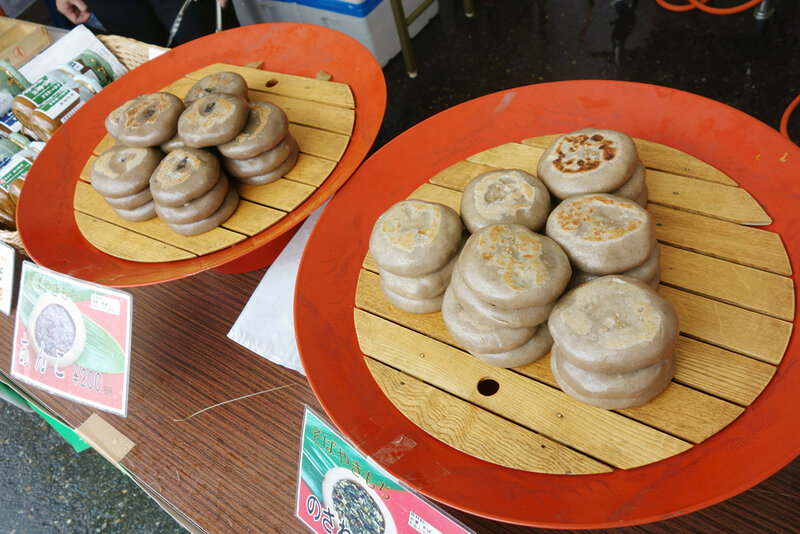
This is a local dish from the Aizu region, made by wrapping bean paste and wild vegetables in a dough made from a mixture of buckwheat flour and glutinous rice flour, then steaming and baking it
The chewy, elastic skin has a subtle buckwheat aroma, and the fillings include bean paste, butterbur, and nozawana
It is made by Yamasa Shoten, a shop in Tadami town known for its 100% handmade soba noodles, and can be enjoyed at nearby restaurants such as Yasori-an, and is also recommended as a souvenir
Soba Yakimochi <Information>
- Facility name: Soba restaurant Yasorian (Yamasa Shoten)
- Address: 30 Kanazu, Kanazuiri, Tadami-machi, Minamiaizu-gun, Fukushima Prefecture
- Phone number: 0241-82-3401
- Business hours: 11:00-14:00
- Closed: Winter (open until snow falls)
- URL: Aizuwakamatsu sightseeing navigation official website
GOOGLE MAP
Nanko Park and Shirakawa Komine Castle (Shirakawa City: National Routes 294 and 289)
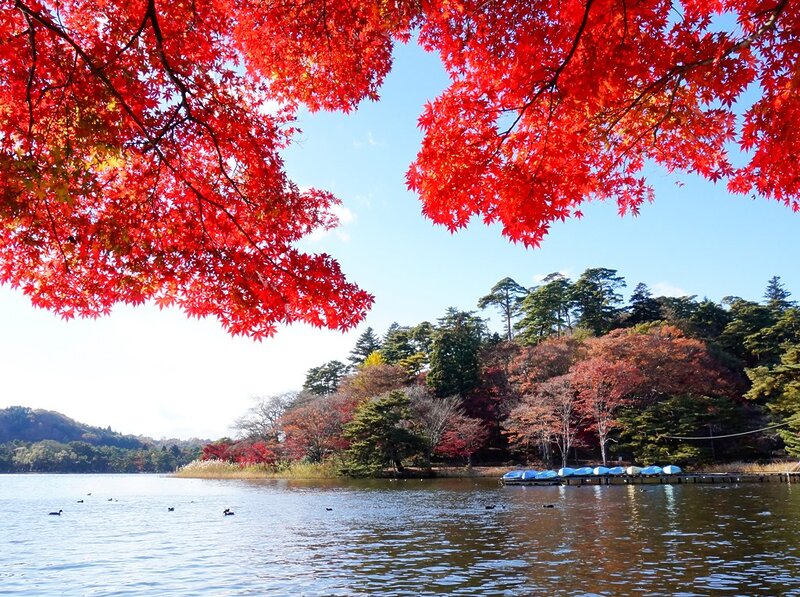
Shirakawa City, known for Shirakawa Barrier, is home to famous autumn foliage spots such as Shirakawa Komine Castle Nanko Park
There are also many famous autumn foliage spots along the Abukuma River that runs through the city, Bridge and Ohashi Bridge village of Nishigo are also popular spots.
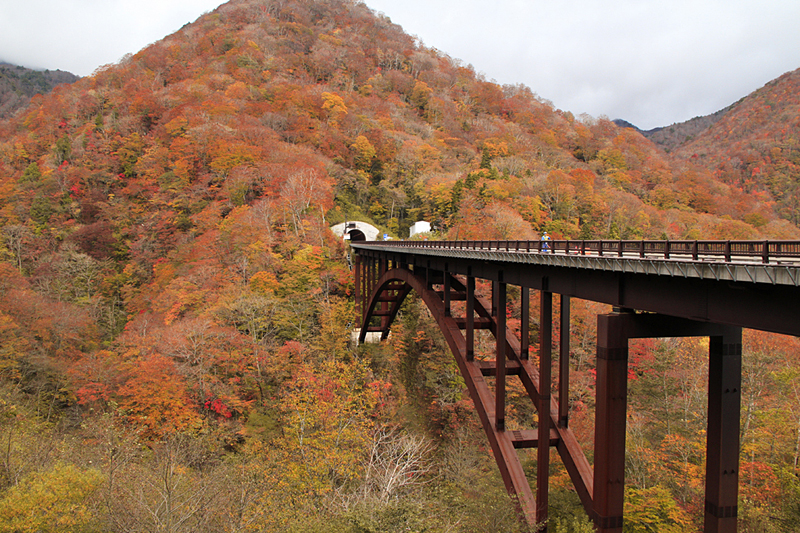
These famous autumn foliage spots, including the Shirakawa Barrier ruins, are far apart, so when visiting them, it's a good idea to enjoy a drive through the city, where you can feel the history of the area
Nanko Park, Japan's oldest park

Nanko Park is said to be Japan's first park , developed and opened to the public in 1801 (the first year of the Kyowa era) by Matsudaira Sadanobu
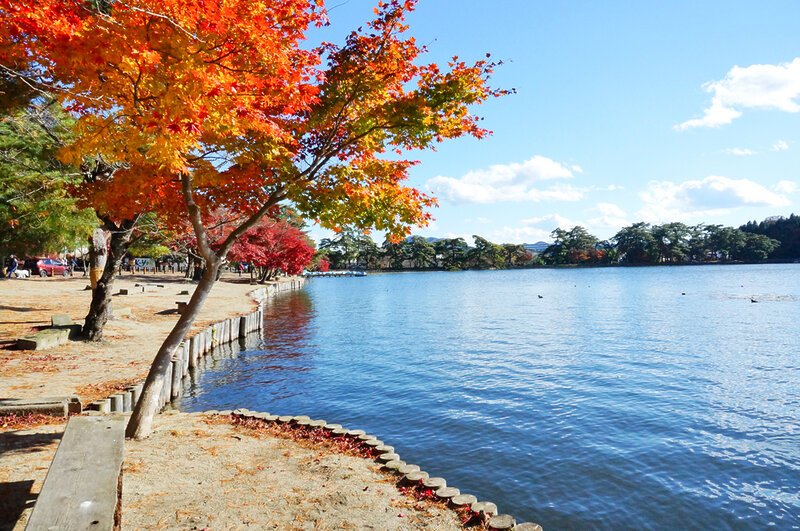
It is a popular resting spot for Shirakawa residents, where you can enjoy cherry blossoms in the spring, fresh greenery in the summer, and autumn leaves in the fall. You can drive close to the lakeside on the north side of the lake
Nanko Park<Information>
- Facility name: Nanko Park
- Location: Nanko, Shirakawa City, Fukushima Prefecture
- Phone number: 0248-22-1111 (main number) (For inquiries, please contact the Shirakawa City Hall Tourism Division)
- URL: Shirakawa City Hall official website
Shirakawa-Komine Castle Ruins (Joyama Park)

Komine Castle one of the " 100 Famous Castles of Japan was the site of fierce fighting during the Boshin War, and the buildings were destroyed, leaving only the stone walls, but the castle tower and other structures were later restored.
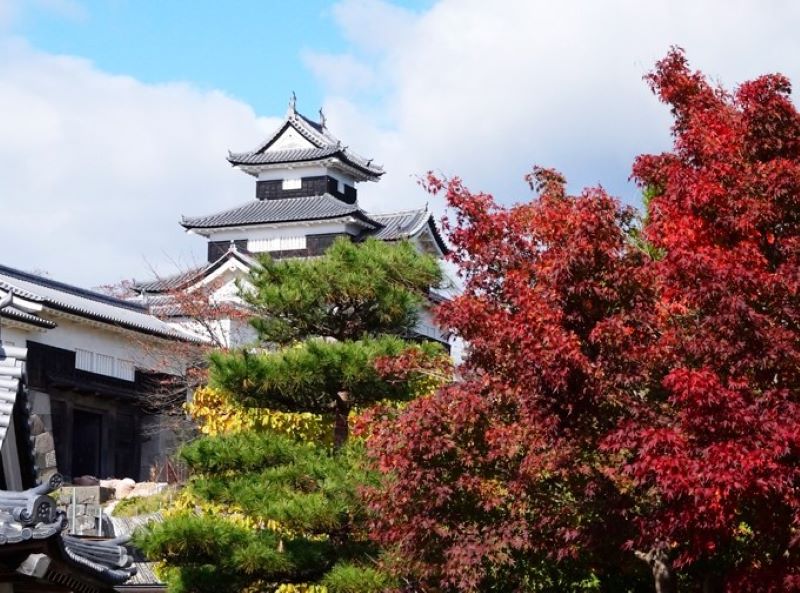
The contrast between the white walls of the castle tower and the red zelkova trees is very beautiful
Both locations have parking lots, so you can enjoy viewing the autumn leaves at your own pace
Shirakawa Komine Castle Ruins<Information>
- Facility name: Shirakawa-Komine Castle Ruins (Joyama Park)
- Location: Shirakawa City, Fukushima Prefecture
- Phone number: 0248-27-2310 (Shirakawa City Hall Cultural Properties Division, Cultural and Academic Affairs Section)
- Opening hours: Komine Castle Three-story Turret 9:00-17:00 (April-September), 9:00-16:00 (October-March)
- Opening hours: Shimizu-mon/Yanomon 8:30-17:30 (April-September), 8:30-16:30 (October-March)
- Closed: New Year's holiday (December 29th to January 3rd)
- URL: Shirakawa City Hall official website
"Shirakawa Ramen" is famous throughout the country
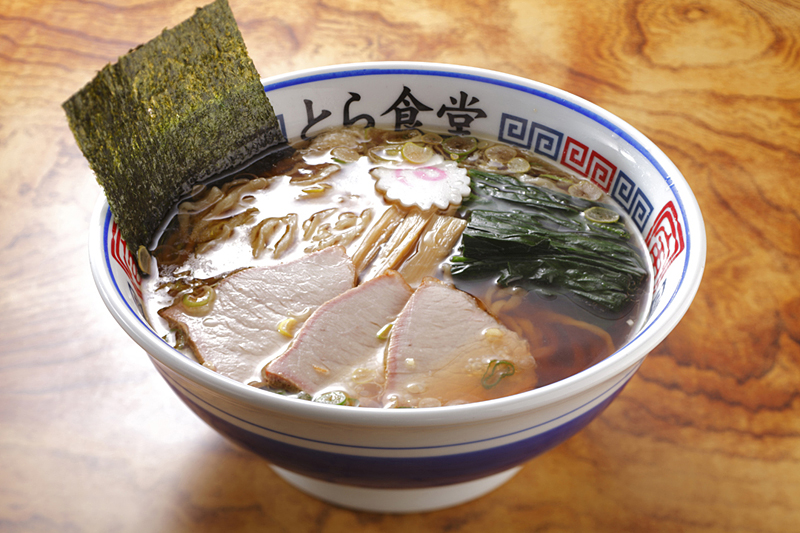
It is characterized by a light soy sauce-flavored soup made with pork bone and chicken stock and hand-made curly noodles, and is a famous local ramen restaurant throughout the country, with over 100 stores in the city and the number of stores in the Tokyo metropolitan area also increasing
Why not try comparing the flavors of each restaurant, each with their own unique twist, using Shokudo in the city as a benchmark, which is said to be the original
For more information about Shirakawa ramen, please see this article
Shirakawa Ramen <Information>
Natsuigawa Valley (Iwaki City: Prefectural Route 41 Ono-Yotsukura Line)
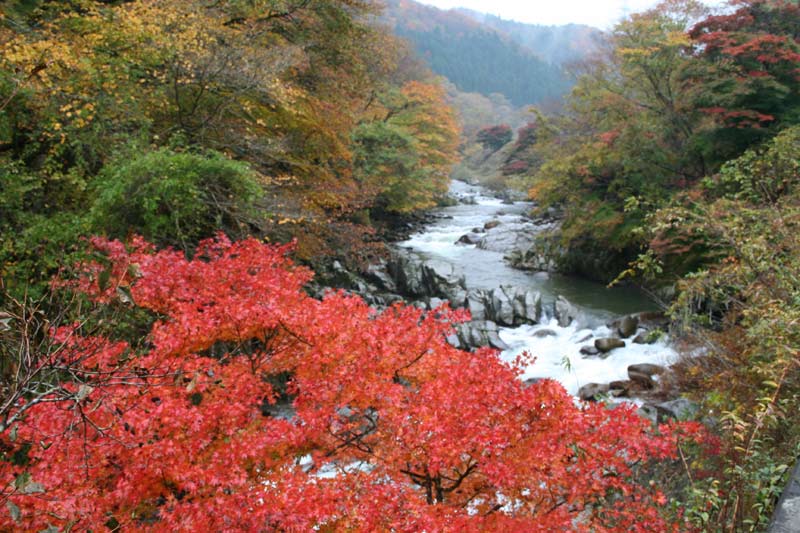
It is close to the outskirts of Iwaki city, and you can enjoy a drive to see the autumn leaves from early to late November
The valley stretches for about 15 kilometers along the JR Ban'etsu East Line and a prefectural road, and is known as a famous cherry blossom viewing spot in spring
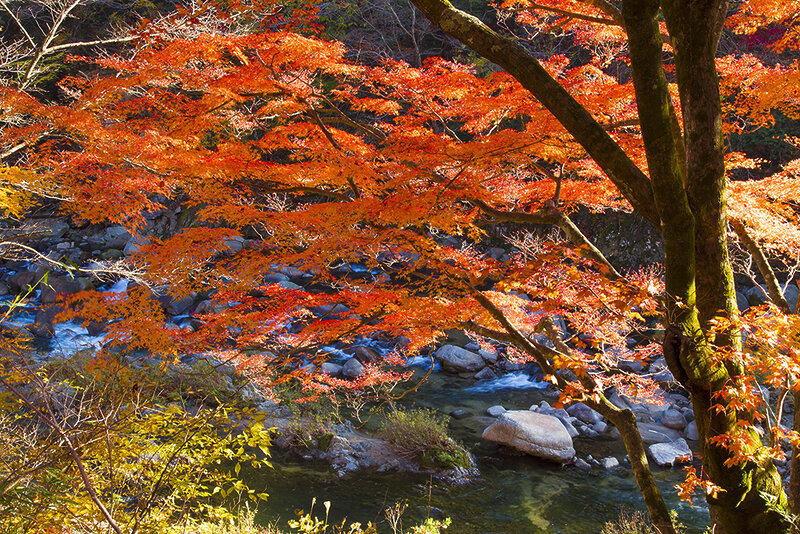
There are many narrow sections of the road within the valley, so you need to be careful when passing large vehicles. There is also little parking along the road, so you need to be careful when parking or getting out of your car
Please use the parking lot at the Natsuigawa Gorge Campground, to Setogarou
Natsuigawa Valley <Information>
- Name: Natsuigawa Valley
- Location: Kami-Ogawa to Kawamae, Ogawa-cho, Iwaki City, Fukushima Prefecture
- URL: Iwaki City Tourism Website
GOOGLE MAP
Iwaki City's fish "Mexicali"

During the autumn foliage season, a large amount of seafood is landed at Onahama Port in Iwaki City, but one fish that is particularly recommended is the mexicali .
Mexicali, with its large, glowing blue eyes, can be caught almost all year round except during closed fishing seasons, and its mild, soft white flesh can be eaten whole, fried, in tempura, or dried
There are restaurants in Iwaki City that serve raw Mexicali as sashimi or sushi, so why not try it on your way to or from the Natsuigawa Valley?
Mexicali <Information>
summary
Fukushima Prefecture has a wide range of autumn foliage seasons due to the differences in climate between the mountainous and highland areas of Aizu, the inland Nakadori area, and the coastal Hamadori area, and the types of broad-leaved trees are also different, so the colors vary as well
In this article, we have introduced roads in these three regions where you can still enjoy a drive to see the autumn leaves
Be sure to visit all three and experience the difference with your own eyes and skin









![[Tohoku Autumn Foliage Driving Map: Aomori Edition] 3 Recommended Driving Courses and Local Cuisine! Autumn leaves at Sukayu Onsen in Hakkoda](https://jp.neft.asia/wp-content/uploads/2024/10/33112629_m-150x150.jpg)
![[Tohoku Autumn Leaves Driving Map: Iwate Edition] 3 Recommended Driving Courses and Local Cuisine! Autumn leaves in Hachimantai](https://jp.neft.asia/wp-content/uploads/2024/10/25627275_m-150x150.jpg)
![[Tohoku Autumn Foliage Driving Map: Akita Edition] 3 Recommended Driving Courses and Local Cuisine! Akita Catch](https://jp.neft.asia/wp-content/uploads/2024/10/979a38324ff45520e274bdc0cee6df5e-150x150.jpg)
![[Tohoku Autumn Leaves Driving Map: Miyagi Edition] 3 Recommended Driving Courses and Local Cuisine! Miyagi Catch](https://jp.neft.asia/wp-content/uploads/2024/10/2df27b453740b4526c9ed0e737aee89e-150x150.jpg)
![[Tohoku Autumn Foliage Driving Map: Yamagata Edition] 3 Recommended Driving Courses and Local Cuisine! Yamagata Catch](https://jp.neft.asia/wp-content/uploads/2024/10/2c2e7024e6ed08990103582514a5844e-150x150.jpg)

![[Recommended Autumn Festival: Fukushima Edition] Autumn in Fukushima is a warrior line and fight festival! Fukushima Catch](https://jp.neft.asia/wp-content/uploads/2024/08/cb34bf6367937424774a9fc363549068-150x150.jpg)
![[Miyagi and Fukushima Edition] Valuable ancient martial arts from the six Tohoku prefectures! What are the unique techniques still handed down today? Old-style martial arts (Miyagi and Fukushima edition)](https://jp.neft.asia/wp-content/uploads/2025/10/koryu01-150x150.jpg)
